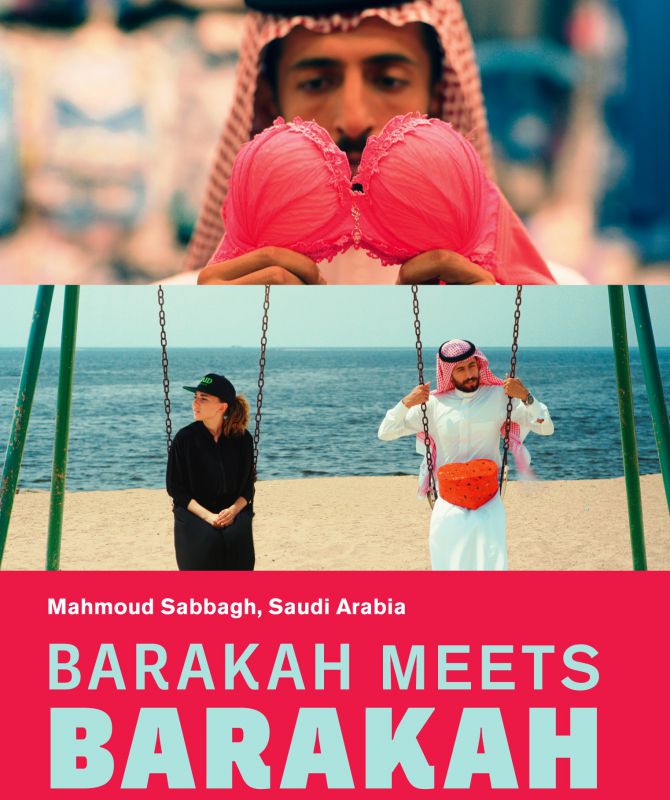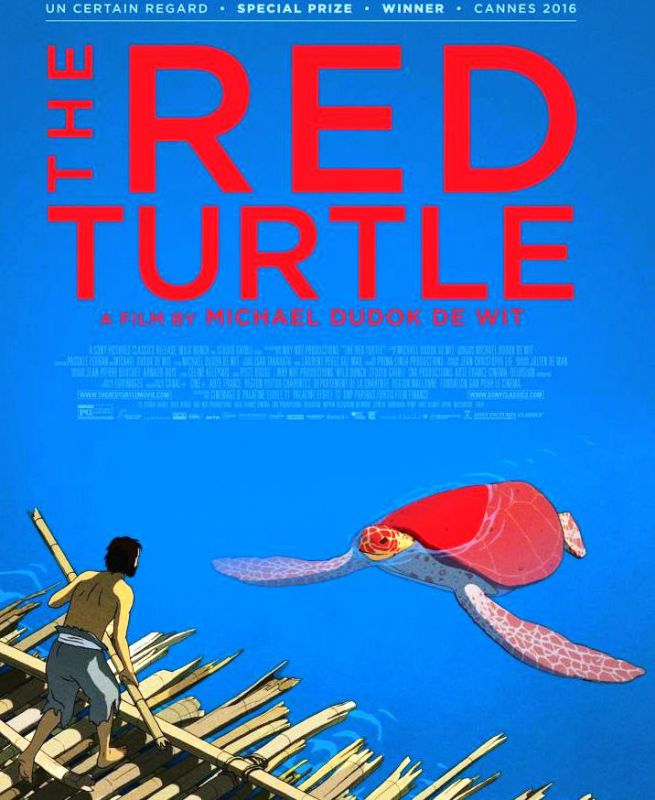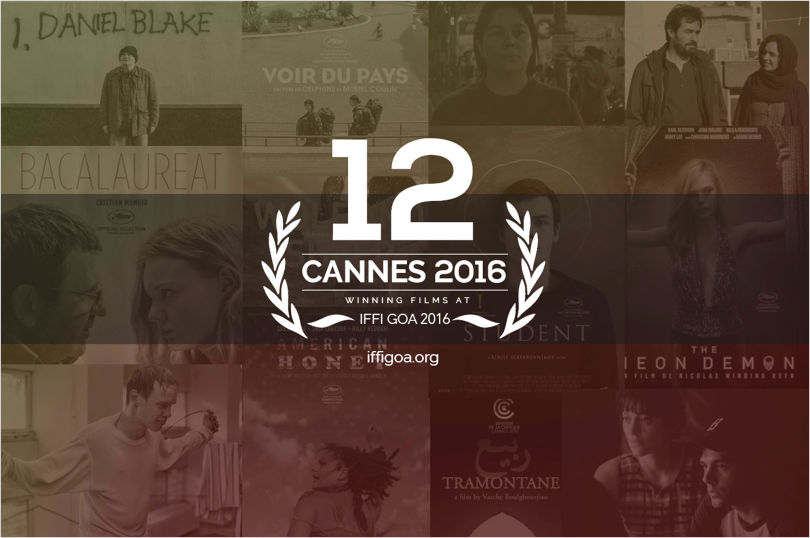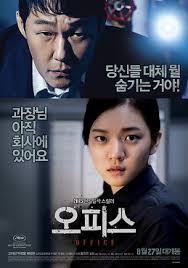![]()
(Ms. Alin Taşçiyan-President Fipresci, Ambassador of Turkey to India--H.E. Mr. Burak Akçapar and Leading Actor--Mr. Ali Sarp Levendoğlu)
Turkey--key country at Mumbai Fim Festival, by Siraj Syed
‘Zabaan-e-yaar-e-man Turkey, va man Turkey na mee daanam’ went a duet in the Hindi film Ek Musafir Ek Haseena, made in the late 50s/early 60s. The lines are not in Turkish, but Farsee (Persian), and translate as ‘My love(r)’s language is Turkish, and I do not know Turkish.
Neither do I. But the name of my mother-tongue, Urdu, is derived from Turkish, and Turkish films have often been a delight. The real delight, a visit to the country whose capital, Istanbul, Europe’s largest city, was once named as the first choice of a world capital by Alexander, the Great (Sikandar-e-Aazam) remains a dream so far. Not for too long, I hope.
For the first time, a high level delegation of over 42 (34 of them listed below) of the leading CEOs from the Film and TV Industry in Turkey, leading producers, directors and production houses, were here to attend the Festival, and showcase some of their best films to Indian audiences.
The festival brought together a selection of 10 of the best Turkish films, especially curated for Indian audiences--Album, My Mother’s Wound, Bride, Snow Pirates, Winter Sleep, Ember, Blue Bicycle, Dust, Whisper If I Forget and 8 Seconds.
Indian media had the opportunity to meet the Deputy Minister of Culture and Tourism, Huseyin Yayman, the President of TESIYAP (read below), Mr. Birol Guven, famous, leading actors in Turkey, Hazal Kaya, Sarp Levendoglu and Kaan Tasener. This media briefing was hosted by the Turkish Ambassador H.E. Burak Akcapar, and Mumbai Consul General H.E. Sabri Ergen, on 25 October, at the J.W. Marriott Hotel. There was a large contingent of Indian media present, who showed great interest in the meeting, where important messages were conveyed. It was an interesting engagement. Anupama Chopra, who was held up at another event, was eagerly awaited, and did come, albeit much later than expected.
Alin Taşçiyan, Film Critic & President of FIPRESCI (International Federation of Film Critics), and Curator of the Turkish Films being screened at MFF this year, moderated the press briefing session.
A capsule of what was said:
“CULTURE AND ART, ABOVE POLITICS”
Deputy Minister of Culture and Tourism, Huseyin Yayman, invited Indian Film-makers to Turkey, and said: "We want to increase the cultural and political values between Turkey and India; We believe art and culture to be above politics"
"WHEN WE DEVELOP CULTURE AND ART EXCHANGES, WE BUILD MUCH MORE LONG-LASTING RELATIONSHIPS"
In his speech, Mr. Huseyin Yayman said, "You already see images of Istanbul in the TV series Feriha, but I invite you to come and stay in Istanbul. Between Turkey and India, there are such important historical bonds. I have come to offer you to go further in increasing the culture-art relations between Turkey and India, on behalf of our President and Prime Minister. When we develop culture and art based exchanges, and build enduring we build really long lasting relations. In this sense, the Mumbai Film Festival is very important to us."
Indicating the progress of relations between Turkey and India, H.E. Mr. Burak Akcapar, the Turkish Ambassador to India from New Delhi, pointed out the global importance of the relation between Turkey and India. And he added, "Having cinema for the whole progress in political, economical and cultural relations will build a bridge between two countries."
Consul General of Turkey in Mumbai, H.E. Mr. Sabri Ergen, indicated that the delegation had chosen specifically to attend this Festival and highlighted their intent saying, "We want to showcase our series, movies and talent."
Festival Director, Anupama Chopra, said it was exciting to welcome Turkey as a guest country.
“We are delighted to have Turkey as our Country of Focus at this year’s Jio MAMI 18th Mumbai Film Festival with Star. We reached out to the Counsel General of Turkey, H.E. Erdal Sabri Ergen, who immediately swung into action about the idea of putting together films and various initiatives from Turkey. From a long list, we chose 10 films, across genres that represent this country, but more importantly, define this country's persona. There’s a film from 1973 (The Bride), as well as the recent, highly acclaimed ‘Winter Sleep’, and a host of other contemporary films, all of which give you a perspective of the country, as good films should.”
"WHEN YOU START SEEING TURKISH SERIES, YOU WILL NOT BE ABLE TO STOP"
Addressing the media, the President of Tesiyap, Mr. Birol Güven, spokesperson of the Delegation and CEO/Founder/Producer of Mint Motion Pictures, highlighted that they want to have co-operation and co-productions and said: "We are here to know you better and to see your culture. And we want to tell more about ourselves because we don't know each other, even though we have so much in common. I would like to warn you that when you start seeing our Turkish series, you will not be able to stop. But don't worry, we have a lot of series"
"I AM SO HAPPY ABOUT MAKING MY MOTHER PROUD"
Leading Turkish Actress, Hazal Kaya, the star of 'Adini Feriha Koydum' (Feriha) series, which was shown in India, and is beginning its Season II on 16 November, said that she is so excited about attending the festival. Pointing out that Feriha was shown in Turkey five years ago, Kaya said, "Getting this interest in India for Feriha is so exciting for us. Actually, Turkish series are shown in many countries. But seeing the result of this in India is a different happiness for me. My mother grew up watching Indian movies. That’s why I am so happy to make her proud. Incidentally, I was not supposed to die in the series, but there was some dispute between the channel and the producer, and the series, along with my character, was abruptly terminated."
"SEEING MYSELF DUBBED IN HINDI, I GOT SO EXCITED"
Highlighting that art is universal, the star of 'Little Lord', Sarp Levendoglu, said, "Being together with the art that reaches everyone in the same way is making me so happy. First time I saw myself dubbed in Hindi, I got so excited.
"ART IS WHAT BRINGS US TOGETHER"
Highlighting the importance of art in people's life, the star of the popular TV series, Fatmagul, Kaan Tasaner said, “Art is what brings us together. It is more important than the language we speak. Thanks to all of you who wants to see us here.”
![]()
(Turkey Consul General of Mumbai - H.E. Mr. Erdal Sabri Ergen, Leading Actor from the hit Turkish drama series, Fatmagul, Mr. Kaan Taşaner, Leading Turkish Actress from the hit drama series, Feriha - Ms. Hazal Kaya, Spokesperson of the Delegation, Head/President of the Film and TV Producers Professional Organisation, TESIYAP - Mr. Birol Güven and Deputy Minister of Culture and Tourism, Mr. Huseyin Yayman)
Turkey-India Entertainment Forum (TV & Film)
An engaging Turkey-India Entertainment Forum (TV and Film) was held on Wednesday, October 26, 2016, following the press meet the previous day. This session was co-chaired by Festival Director, Anupama Chopra, and the President of TESİYAP (Television & Cinema Producers Professional Organisation of Turkey), Mr Birol Güven. The primary objective of the Industry Forum was to forge new relationships between the Film and TV industries of India and Turkey that will pave the way for collaborative productions, to build the legal foundation for co-production agreement and to contribute to the political, economic, artistic and cultural cooperation and solidarity between the two countries.
From the Turkish Delegation, special invitees included Turkish Ambassador in New Delhi Burak Akçapar, Turkey’s Vice-Minister of Culture & Tourism Hüseyin Yayman, Turkish Consul General in Mumbai Erdal Sabri Ergen, as well as prominent Turkish producers, Birol Güven, Ali Gündoğdu, Faruk Turğut, Şükrü Avşar, Ömer Atay, ATV and Kanal D Representatives, Mars Distribution CEO Ferhat Aslan; successful Turkish directors Reha Erdem, Çağan Irmak, Ömer Faruk Sorak, Murat Şeker, Ümit Köreken, Faruk Hacıhafızoğlu participated in the panel discussion.
Representing the Indian film industry on the panel was Indian film-maker, Vidhu Vinod Chopra, of Vinod Chopra Films, who is married to Festival Director, Anupama Chopra.
The visit was organised by TESİYAP, (Television and Film Producers Professional Association), and supported by the Ministry of Culture & Tourism, General Directorate of Cinema and Turkish Consulate General in Mumbai.
About TESİYAP
TESİYAP is an important professional organisation of the Turkish production world. They protect the rights of its members: cinema and TV producers, collects and distributes copyright shares; works to organize events that promote and represent its members in national and international platforms. Its members are Turkey’s prominent film and TV producers, who export TV shows to 92 countries and whose productions reach more than 400 million viewers.
Delegates Participating in Industry Forum
Sr.No Name of Dignitary Designation
1 H. E. BURAK AKÇAPAR Ambassador of Turkey to India (NewDelhi)
2 Erdal Sabri Ergen Consul General of Turkey in Mumbai MINISTRY OF CULTURE & TOURISM
3 HÜSEYİN YAYMAN Vice-Minister of Culture and Tourism
4 ERKİN YILMAZ Director General for Cinema
5 SELÇUK YAVUZKANAT Head of Department in the General Directorate of Cinema TESİYAP DELEGATION
6 BİROL GÜVEN President of TESİYAP – Producer –Founder and President of MINT MOTION PICTURES – SPOKESPERSON OF THE DELEGATION
7 SEYİT ALİ GÜNDOĞDU Producer – Founder & Vice President SÜREÇ FILM TESIYAP
8 FARUK TURGÜT Founder / Producer Member of the Board GOLD FILM TESİYAP
9 ŞÜKRÜ AVŞAR Producer – Founder AVŞAR FILM
10 FERHAT ASLAN CEO Mars Distribution – MARS CINEMA GROUP
11 MUHAMMED ZİYAD VAROL ATV Licensing & Digital Manager –Acquisition & Sales, Platforms & Digital Operations
12 UTKU KARABAYRAKTAR KANAL D Representative
13 AHMET FURKAN GUNDOGDU TRT1 Programme Manager
14 ŞABAN ŞİKAR TRT1 Drama Manager
15 ALİ OMER ATAY Producer – Co founder ATLANTİK FILM
16 EMİN ACARTEKİN ACAR (Investor)
17 MURAT ŞEKER SUGARWORKZ Director / Producer / Founder
18 DR. BEKİR MURAT ÖGEL MINT MOTION PICTURES Finance Consultant
19 ALİN TAŞÇIYAN Film Critic President of Fipresci (International Federation of Film Critics)
20 ÖMER FARUK SORAK Director 8 Saniye / (8 SECONDS) BOCEK FILM
21 MEMNUNE İPEK SORAK Producer 8 SANİYE / 8 SECONDS BOCEK FILM
22 ÜMİT KÖREKEN Director MAVİ BİSİKLET / BLUE BICYCLE DRAMA FILM PRODUCTION
23 NURSEN ÇETIN KÖREKEN Producer MAVİ BİSKİLET / BLUE BICYCLE DRAMA FILM PRODUCTION
24 HAMİDE GÖZDE KURAL Director TOZ/DUST – TOZ FILM PRODUCTION
25 YAŞAR ARAK Scenarist
26 ALİ SARP LEVENDOĞLU ACTOR – TV Drama LITTLE LORD
27 BURHAN GÜN TESİYAP General Secretary Project Director
28 ÖZLEM AKBULUT GÜN TESİYAP Legal Consultant Coordinator
29 GAMZE PAKER MEKİK TESİYAP General Project Coordinator Producer
30 ÖKYÜ CANLI TESİYAP General Project Coordinator Assistant
31 DENİZ GÖK TESİYAP Project Assistant PR Assistant
32 ETEM CANER KARAÜÇ TESİYAP Video Production
33 FULYA İNANDIKLI TESİYAP PR Manager
34 SİNAN YILMAZ TESİYAP Photographer
Turkey at a glance
#The oldest known human settlement in the world is located in Catalhöyük, dating to 6500 B.C.
#The world’s first landscape painting was found on the wall of a Catalhöyük house, illustrating the volcanic eruption of nearby Hasandag.
#The first coins ever minted were produced at Sardis, the capital of the ancient kingdom of Lydia, at the end of the seventh century B.C.
#Two of the Seven Wonders of the Ancient World stood in Turkey — the Temple of Artemis at Ephesus and the Mausoleum at Halicarnassus, Bodrum.
#Anatolia, the Asian portion of Turkey, is the birthplace of many historic figures and legends, such as the poet Homer, King Midas, Herodotus (the father of history) and St. Paul the Apostle.
![]()
#Istanbul’s Grand Bazaar, or Kapalı Çarşı, dates to 1455, and was established shortly after the Ottoman conquest of Constantinople. It has 61 streets, lined by more than 3,000 shops, and currently occupies nearly 333,000 square feet.
#There are 13 spots in Turkey inscribed on UNESCO’s list of World Heritage Sites, and a whopping 62 on the tentative list. They range from a Mesolithic temple (Göbekli Tepe) to a Biblical city (Ephesus) to a World War One battlefield (Gallipoli).
#Turkey is the sixth most-visited tourist destination in the world.
![]()
#Director Nuri Bilge Ceylan’s Winter Sleep won the Palme d’Or at the Cannes Film Festival in 2014. Turkey makes about 100 films per year and is one of the few countries where domestic films earn more at the box office than Hollywood releases.
A word about the women behind who mediated the Turkey-Indian media interaction
Roma Pereira Talwar is their mother-figure. Roma does no justice to her ‘sword’ (married) surname, but a lot of justice to her illustrious father, Roger C. B. Pereira, a communications and public relations veteran himself. MFF has tested her mettle twice in a row. Last year, working for the festival proper, she was battling dengue during the period, yet performing whatever duties she could, from the hospital bed. This time, her mother is seriously ill, but she showed true grit in doing her duties as retained.
Her retinue includes Jayna and Pooja, always up to the task, and Elfin Fernand, a woman with a name as sonorous as her father, Frank Fernand’s musical notes (he worked with composer duo Kalyanji-Anandji, and produced a Hindi film too, Priya). Like a true friend, Elfin, who has been an air-hostess and, briefly, a PR executive, was by Roma’s side.
Roma and Roger’s company is called Turning Point.
I wish her efforts prove to be a turning point for the Turkey’s film and TV ambitions, which are already soaring









































